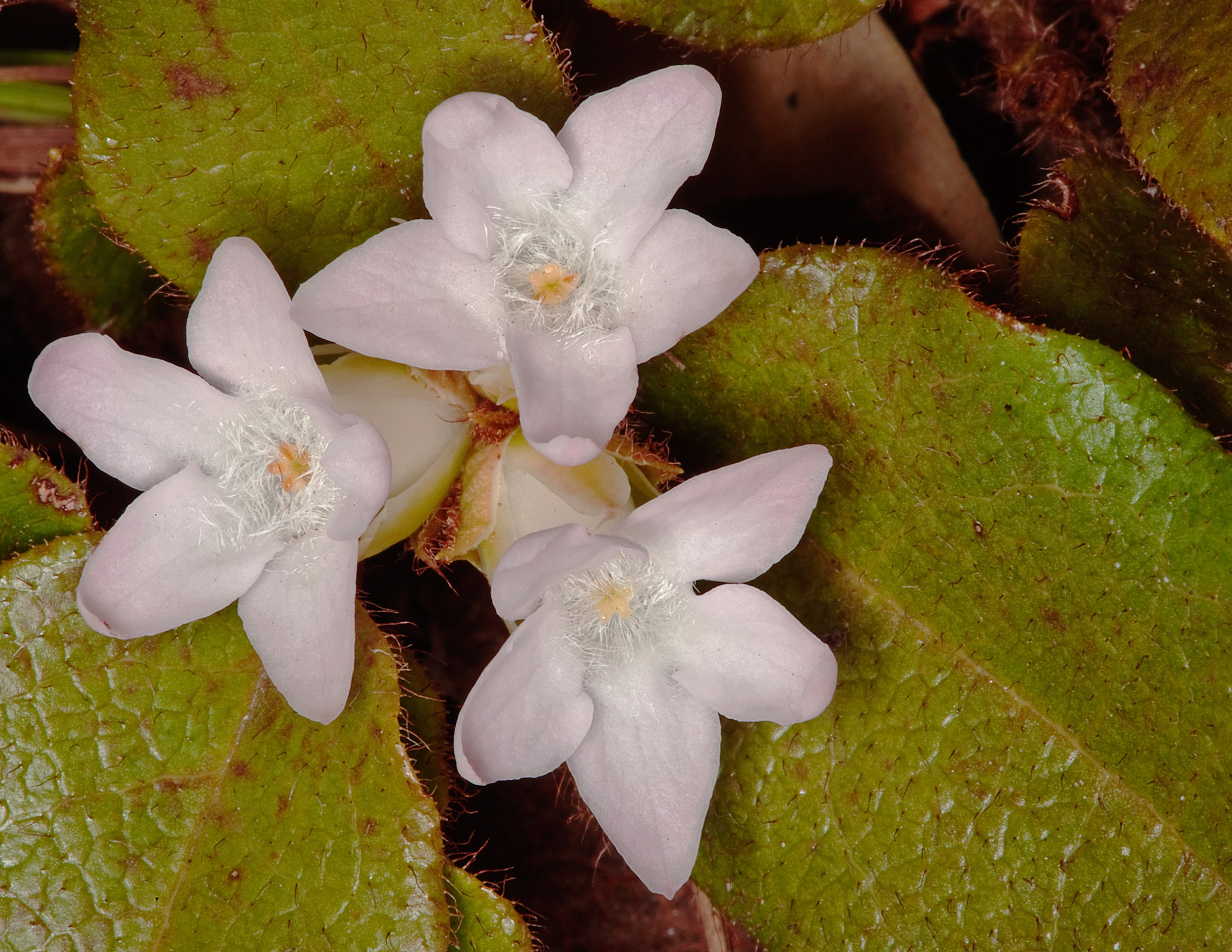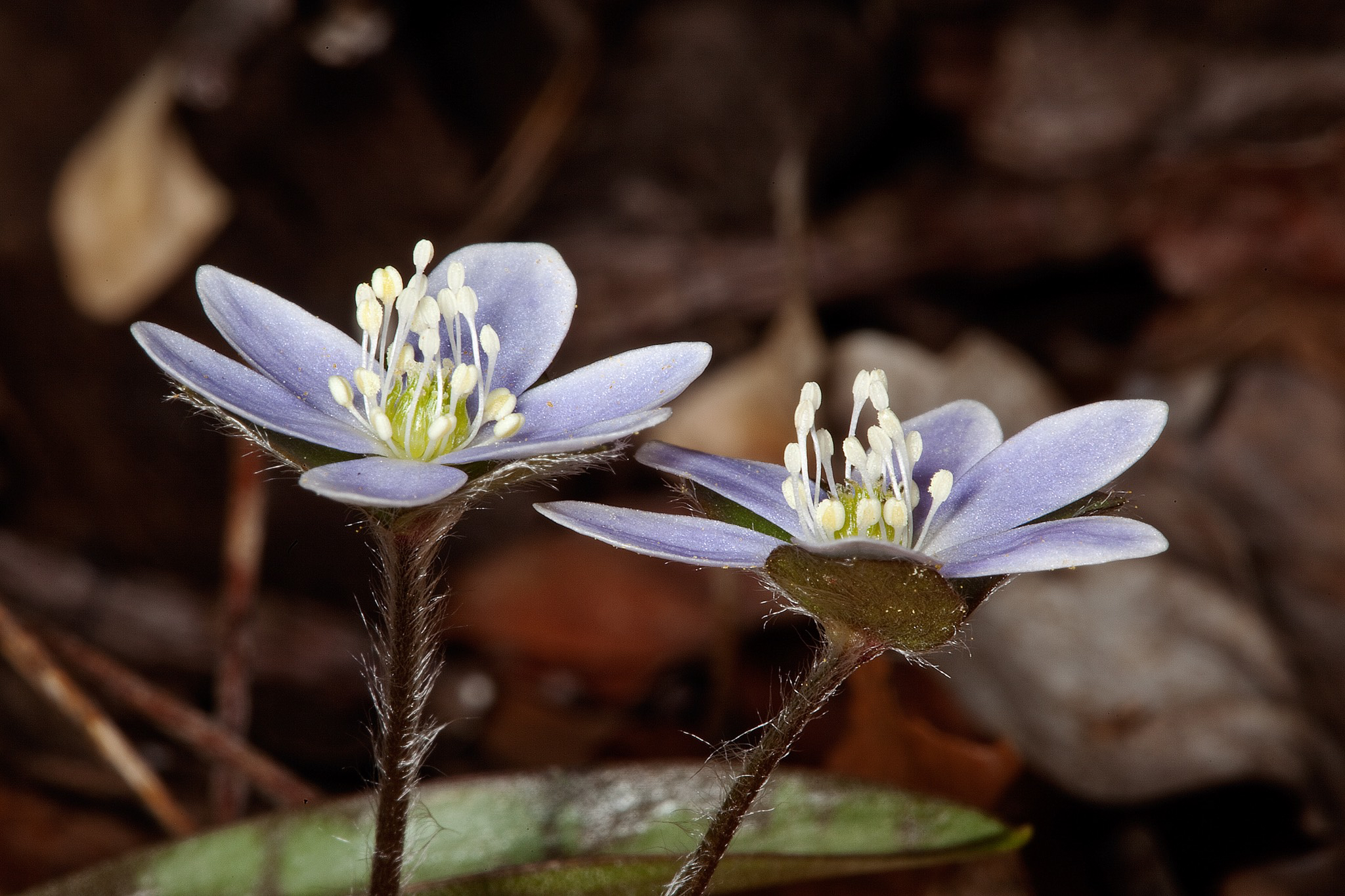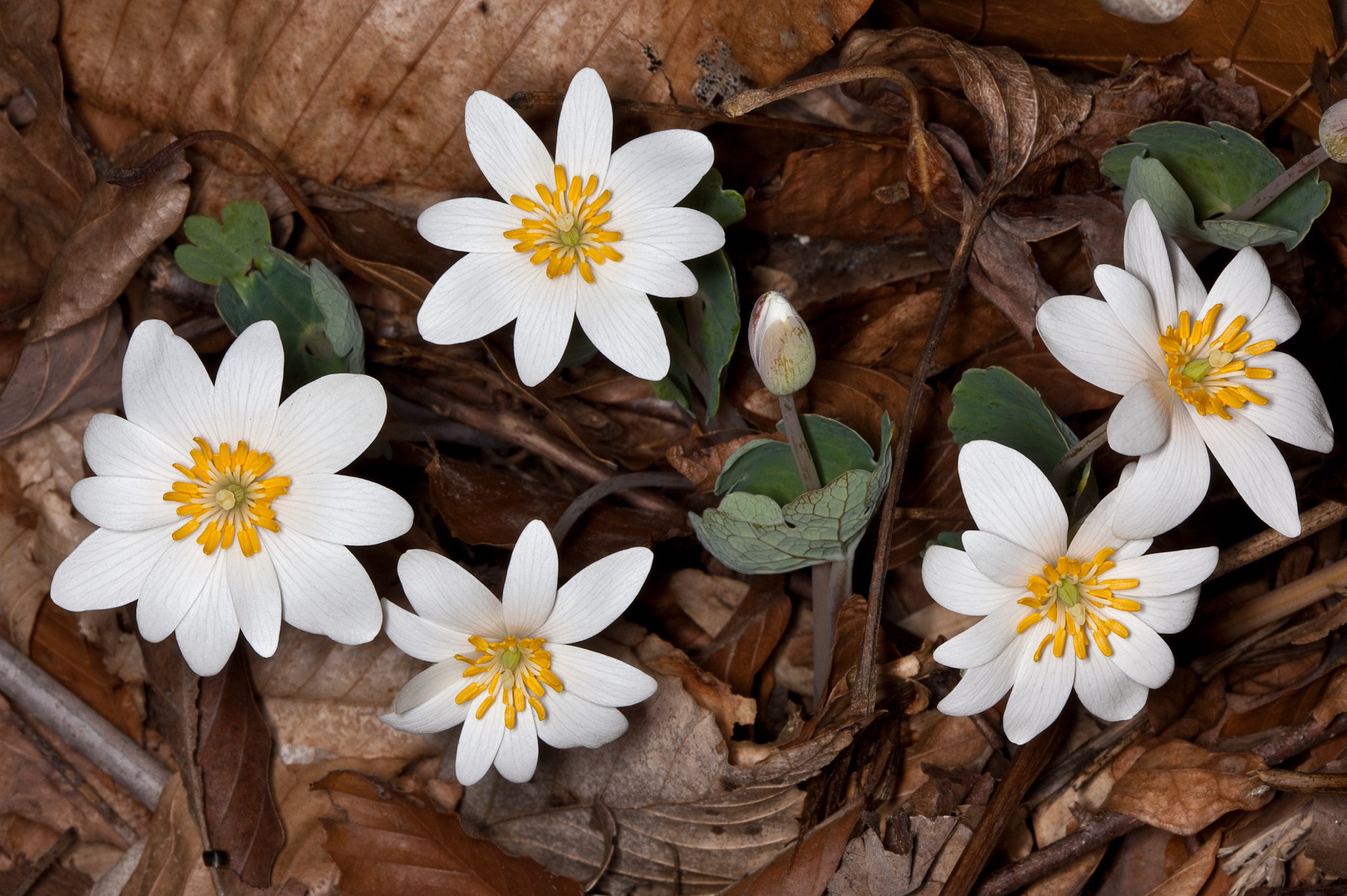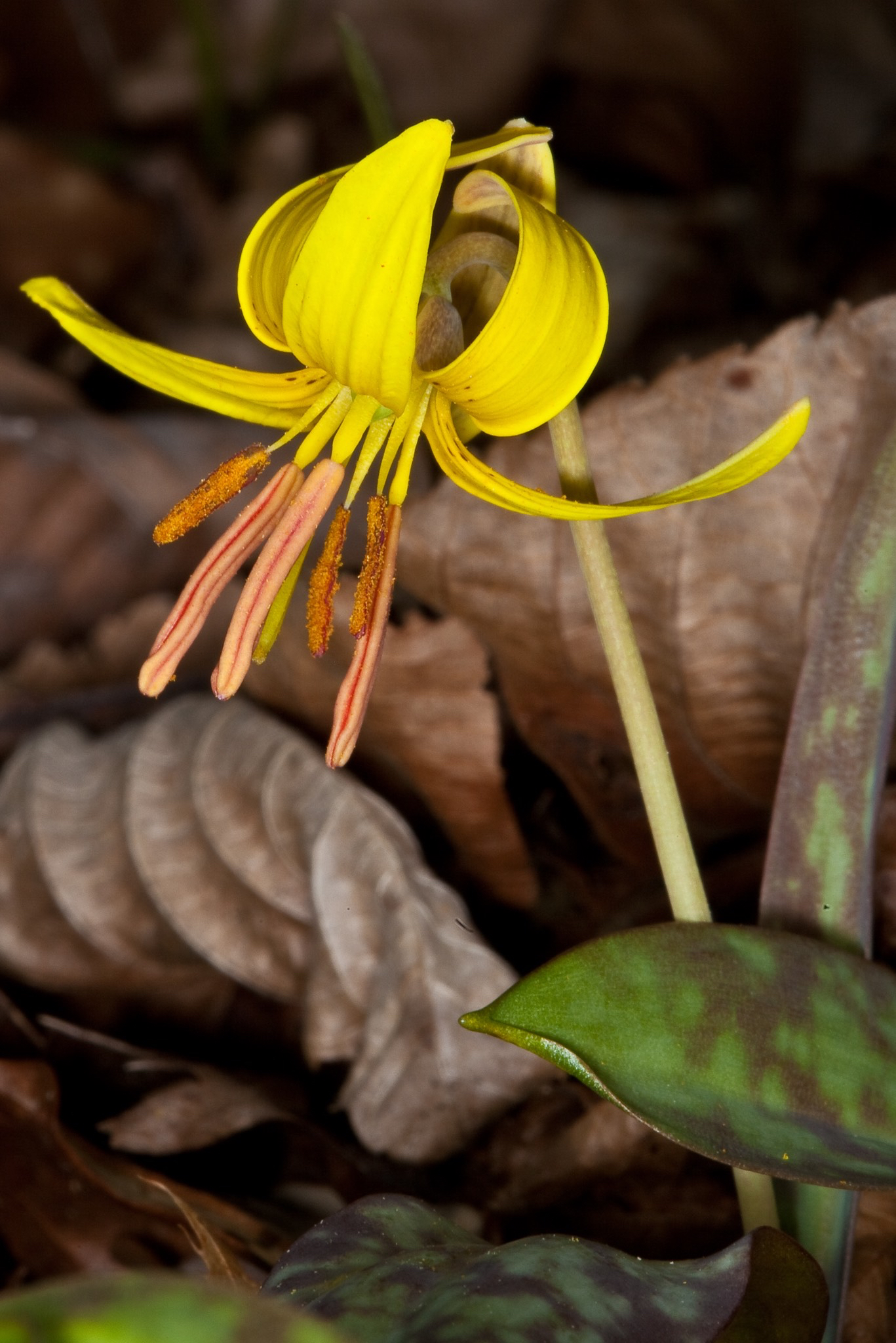Crow’s Nest: Wildflower Walk results
By Daniel Barringer, Preserve Manager. Archive photos by Denis Manchon and Daniel Barringer.
The morning dawned with steady rain and our hopes for the hike were closely tied to the weather radar. The drizzle stopped at precisely 9:30 and away we went.

First we climbed the hill across from the visitor center to see up close the trailing arbutus (Epigaea repens, photo above by Denis Manchon).

Then we headed up Piersol Road to a spot along the roadside where Dutchman’s breeches (Dicentra cucullaria) is doing really well even though it is competing with several species of invasive plants there. It occurs to me that the population might be improving in part because we’ve had to take down many ash trees along the road as they succumbed to Emerald Ash Borer. But it would also be true that the Japanese honeysuckle, garlic mustard, and Oriental bittersweet would also benefit from the additional sunlight.
Then we carpooled south to the Horse-Shoe Trail and hiked in to the Deep Woods along Mine Run. The waterfall at the creek was swollen from the night’s rain.

It was billed as a hepatica hunt and we did see a few of them (now renamed Anemone americana, Denis Manchon photo, above) still in bloom. The peak for them might have been the previous weekend but finding a few was still worth it.

We passed many violets (Viola spp.) on our hike. It’s easy to overlook a species so common that it might be considered weedy, but they are spectacular flowers.

The bloodroot (Sanguinaria canadensis, Denis Manchon photo above) was mostly past bloom, but I did see a few later in the day still with flowers.

The leaves of trout-lily (also called dogtooth violet, Erithronium americanum, Denis Manchon photo above) are everywhere. Only a small fraction of them bloom in any year, and some had already finished, but we did see a few. They are much smaller than Denis’ excellent closeup photos suggest.

The dwarf ginseng (Panax trifolius, above) has started to bloom, and I saw some the day before our hike, but most I think were beyond our reach today with the swollen creek rushing past.

We did see plenty of rue anemone (Thalictrum thalictroides, above) and some wood anemone (Anemone quinquifolia, below).

We saw plenty of spring beauties in bloom (Claytonia virginica). See my previous post about spring to see a Denis Manchon photo of that common and beautiful wildflower.

The marsh marigold (Caltha paulustris, above) we did not see because the wetland where it grows was under a few additional inches of muddy storm water. But they were there the day before and will be there, though a bit muddy, tomorrow when the waters recede. We did contrast this clump-forming native wildflower with the invasive non-native lesser celandine (Ficaria verna) which grows on property adjacent to the preserve nearby. Both are “buttercups” but that’s where the resemblance ends.

Finally, another we didn’t see because it is just coming up and we missed the only one that has started to flower: Cardamine concatenata, formerly Dentaria laciniata). Lots more of this will show up around our Deep Woods in the next week.
There are another whole set of flowers that will be visible two weeks from now as these fade out for the season. It’s worth coming back often to see this rapidly-changing landscape. Wild geranium, nodding trillium, showy orchis, Mayapple, Solomon’s seal, and many others will be flowering soon.
Years ago I started to write a field guide to the wildflowers of Crow’s Nest Preserve, and so I laminated a few pages of that document, and added a few more entries, to assist with today’s hike. I had been inspired to start the project because Denis Manchon donated so many beautiful photos of them before he passed away in 2011. After today’s hike I’m inspired to try to fill in the hundreds of species that we have here that I love to share with visitors.
